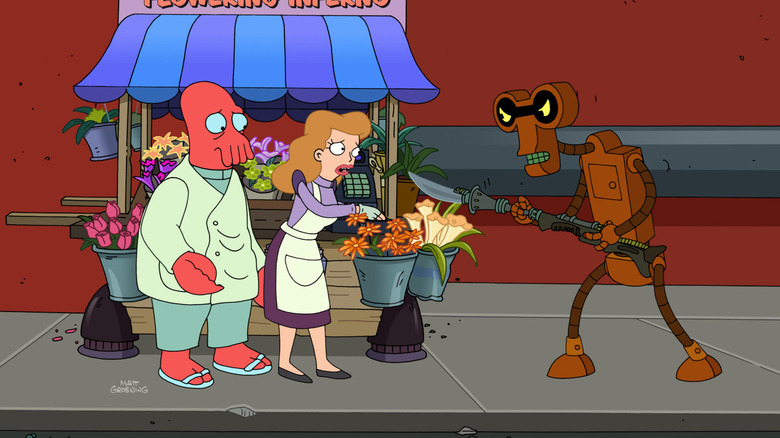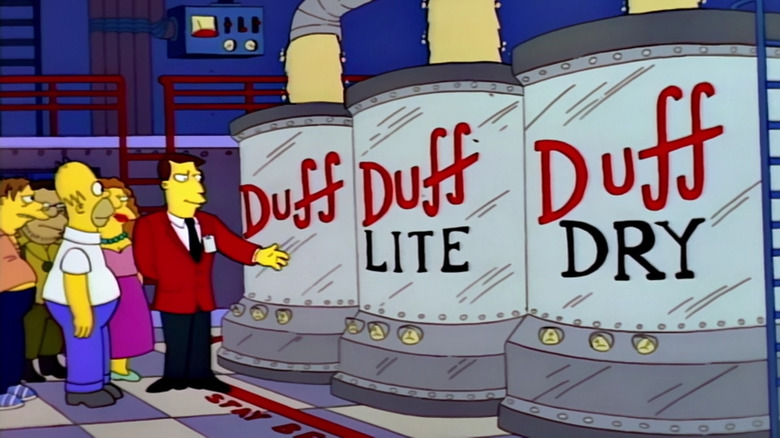Futurama Faced An Interesting Challenge While Making The Leap To HD
Although "Futurama" has not aired nearly as many episodes as shows like "South Park" or "Family Guy," it has been around for pretty much the same amount of time. Including the upcoming revival, "Futurama" is a show that's gone on for over 23 years without completely dying. This means that, like other long-running cartoons of its time, the "Futurama" showrunners had to figure out how to gracefully deal with the transition from standard definition to high definition.
The main change with switching to HD was the difference in the screen ratio. Whereas the earlier "Futurama" episodes are in that square, 4:3 ratio meant to fit the screen of an older TV, new episodes have the modern standard aspect ratio of 16:9. The wider screen means the show has a more cinematic feel, and of course it makes the show look much better on a modern TV. This led to a slight problem for the "Futurama" directors, however, as they wanted to make sure the show still looked good in SD. "The real challenge is trying to take advantage of more filmic staging but still protecting for 4:3, which we are still required to do," producer Claudia Katz explained in a 2011 interview.
The challenge first came while making "Bender's Big Score," the first of a series of TV movies from 2007 to 2009. (The movies are currently available on Hulu, each split into four episodes, making up the show's sixth season.) As supervising director Peter Avanzino explained, "We had to make sure that nothing important was on the sides of the screen because it wouldn't be seen if the show was watched on a regular TV and cropped."
The importance of keeping things in SD
The 2000s were an awkward time for a lot of TV shows, as Americans gradually switched over to wider HD screens. "I don't know what the stats are now; I just made the shift about a month ago," said Avanzino back in 2011. Staying in the 4:3 ratio meant potentially alienating the growing number of viewers with a newer TV, whereas jumping to HD meant you had to make sure no important characters were on the sides of the screen. Throughout those couple years of transition, both of these options had clear ups and downs.
It's also led to a lot of issues over the remastering of old TV shows to fit modern TV screens. This caused particular controversy back when Disney+ first started streaming "The Simpsons," where some viewers couldn't help but notice that a lot of the visual gags in older episodes no longer worked. Most famously, there was the joke in season 4's "Duffless" where the Duff beer factory shows us their three types of beer being made: Duff, Duff Lite, and Duff Dry. Back in 1993, viewers could see that all three beers were coming from the same tube at the top of the screen. But for people watching in the remastered version (the default option on Disney+), the tube is cut from the top of the screen to fit the 16:9 ratio, and the joke is lost.
"Futurama," meanwhile, is streaming on Hulu, a platform that gives viewers the old episodes in the same SD format it came in, which means that none of the visual gags are undermined. A few decades have passed, but luckily you can still watch some of the best episodes of "Futurama" exactly how they originally aired.

